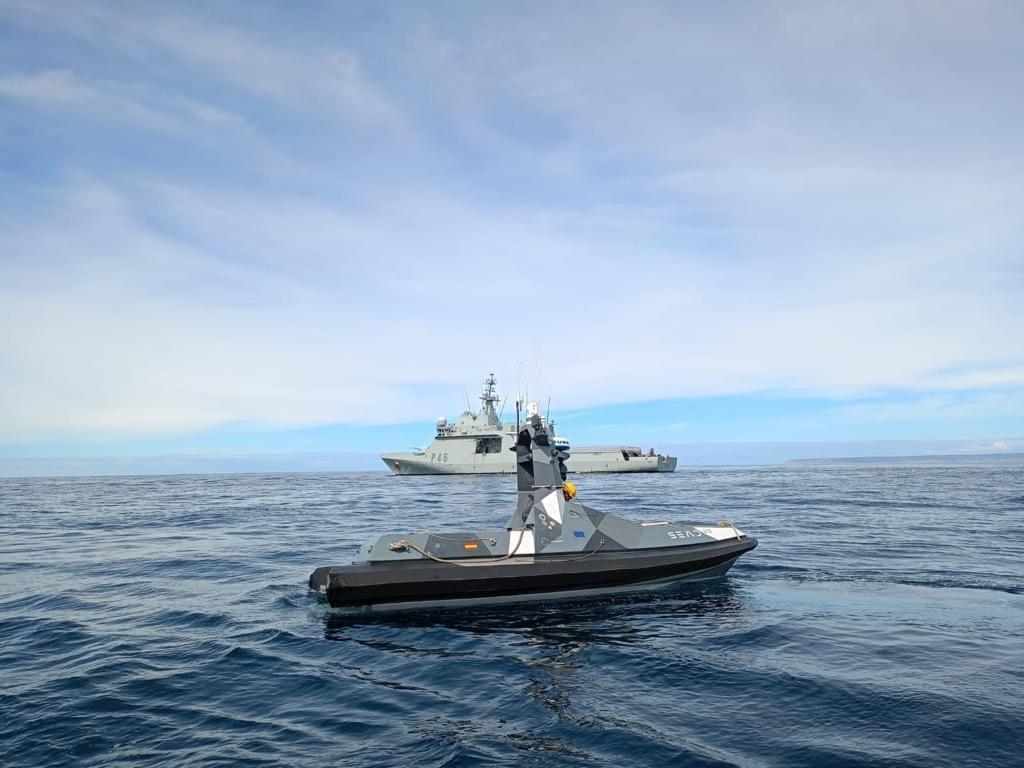NATO showcases uncrewed maritime systems in the Baltic Sea
Throughout June, NATO’s Standing Naval Forces are conducting a series of operational demonstrations involving uncrewed maritime systems across the Baltic Sea. The initiative is part of a strategic push to accelerate the integration of autonomous platforms into Allied naval operations and to bolster collective maritime situational awareness and undersea infrastructure protection.
navy worldwide nato equipment and technology newsToday | 09:19 | Source: Gazeta Morska | Prepared by: Kamil Kusier | Print

fot. NATO
These demonstrations serve as a key lead-up to Dynamic Messenger 2025, NATO’s flagship innovation exercise scheduled for this autumn in Portugal, and are conducted under the banner of Task Force X – a high-priority NATO initiative combining rapid technology development with real-world operational deployment.
Led by NATO’s Allied Command Transformation (ACT), Allied Maritime Command (MARCOM), and the Centre for Maritime Research and Experimentation (CMRE), in partnership with Allied nations, the initiative enables participating navies to validate new capabilities in complex maritime environments.
- Our focus is on delivering uncrewed systems to NATO’s Standing Naval Forces with both speed and operational relevance, said Vice Admiral Mike Utley, Commander of Allied Maritime Command. - These trials not only enhance NATO’s ability to operate networked autonomous assets, but also support national innovation pipelines through collective development.
Fast-tracked in response to subsea threats
Task Force X was operationalized at unprecedented speed following recent subsea cable disruptions, reflecting NATO’s determination to counter hybrid threats in the maritime domain. By blending enhanced vigilance activities with autonomous capabilities, the initiative seeks to deliver persistent, cost-effective surveillance across critical sea lanes.
- Task Force X exemplifies NATO’s ability to move from concept to operation in record time, said Admiral Pierre Vandier, NATO’s Supreme Allied Commander Transformation. - By combining scalable commercial technologies with high-end AI-driven systems, we provide layered maritime security while freeing up high-value assets for strategic tasks. Early successes in the Baltic are laying the groundwork for broader Allied adoption.
From concept to capability
Drawing inspiration from the U.S. Navy’s Task Force 66, Task Force X supports continuous surveillance, threat detection and tracking, and interoperability among Allied platforms. Nations contribute their own uncrewed systems, while NATO provides a shared framework for integration, experimentation, and tactical deployment.
Supporting these efforts is NATO’s Research Vessel Alliance, a purpose-built maritime laboratory operated by CMRE. Equipped for scientific and technical experimentation, NRV Alliance is central to validating new uncrewed technologies and concepts at sea.
Maritime innovation with operational impact
The Baltic Sea demonstrations represent a strategic intersection between research, capability development, and mission-ready deployment. They reaffirm NATO’s commitment to staying at the forefront of maritime innovation – leveraging autonomous systems, artificial intelligence, and federated force models to safeguard the undersea domain.
NATO’s Allied Command Transformation and Allied Maritime Command continue to lead the way in bringing next-generation capabilities from lab to fleet – securing maritime infrastructure, enhancing surveillance, and reinforcing Allied naval superiority in an evolving threat landscape.
see also
Buy us a coffee, and we’ll invest in great maritime journalism! Support Gazeta Morska and help us sail forward – click here!
Kamil Kusier
redaktor naczelny
gallery



comments
Add the first comment
see also
Poland’s maritime offensive: ambitions, delays and expectations - is it enough for the Baltic?
Baltic Sea: SNMCMG1 tests mine response capabilities in live-fire drill
Baltops 25: NATO launches flagship maritime exercise in the Baltic Sea
Sweden's Visby-class corvettes to receive major air defence upgrade with Sea Ceptor system
New era for the Finnish navy: Pohjanmaa-class corvette launched in Rauma
USNS Point Loma (T-EPF-15) completes sea trials, marking milestone in medical transport capability
Veterans honoured in Gdynia. Central celebration of the Day of Veterans of Activities Outside the State Borders
SAREX 25: integrated search and rescue operations on land, sea, and air
Baltic on alert: Poland responds to the emerging threat of the "shadow fleet"
Belgian navy tests new asset in mine countermeasures: the R7 underwater drone
ADVERTISEMENT
ADVERTISEMENT